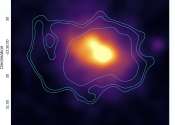Soda can array revisited: It may not beat the diffraction limit after all
(Phys.org)—In 2011, scientists from the Institute Langevin in Paris built an array of 49 empty coke cans that resonate when exposed to an acoustic wave, causing the cans to produce sound similar to the way blowing across ...









